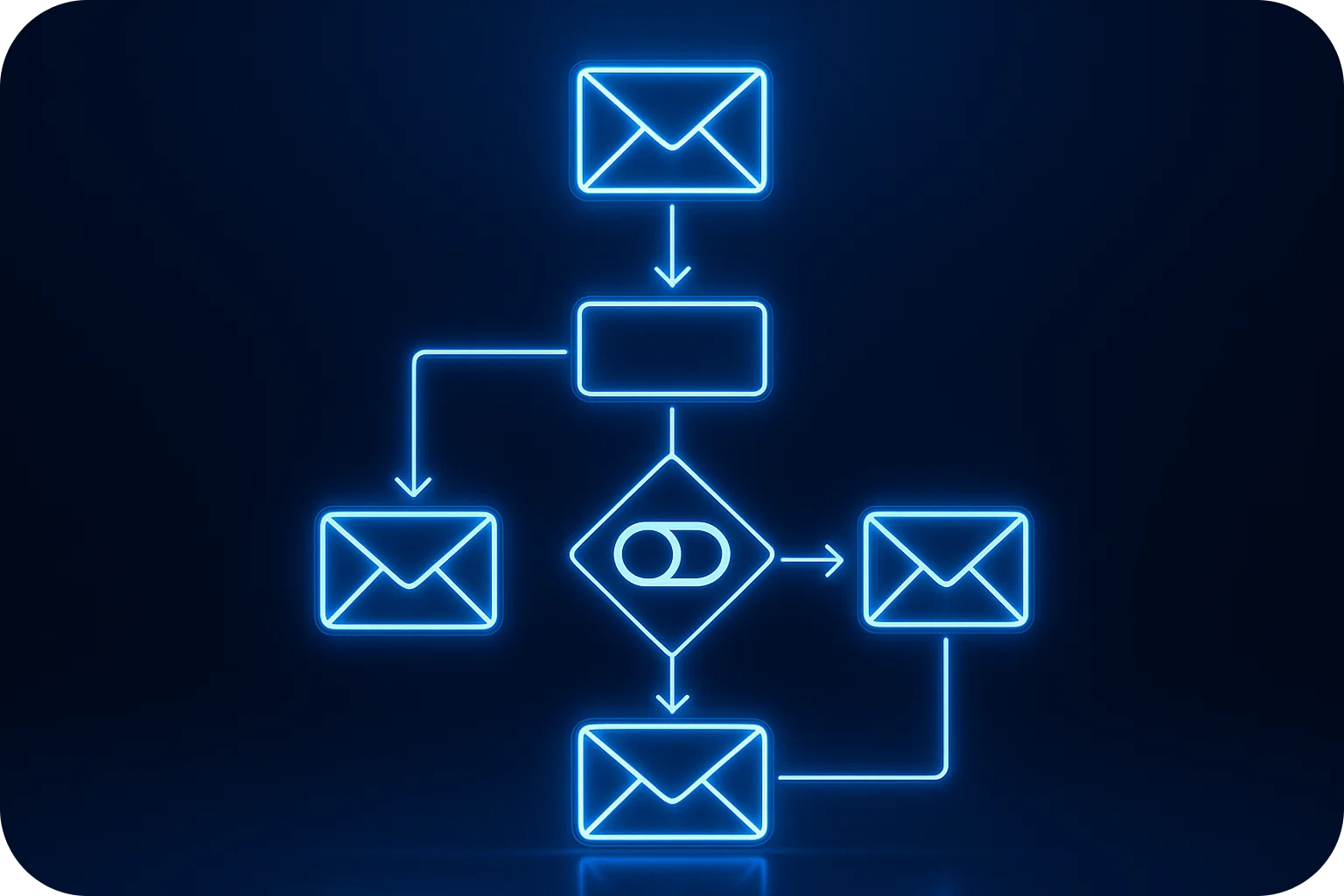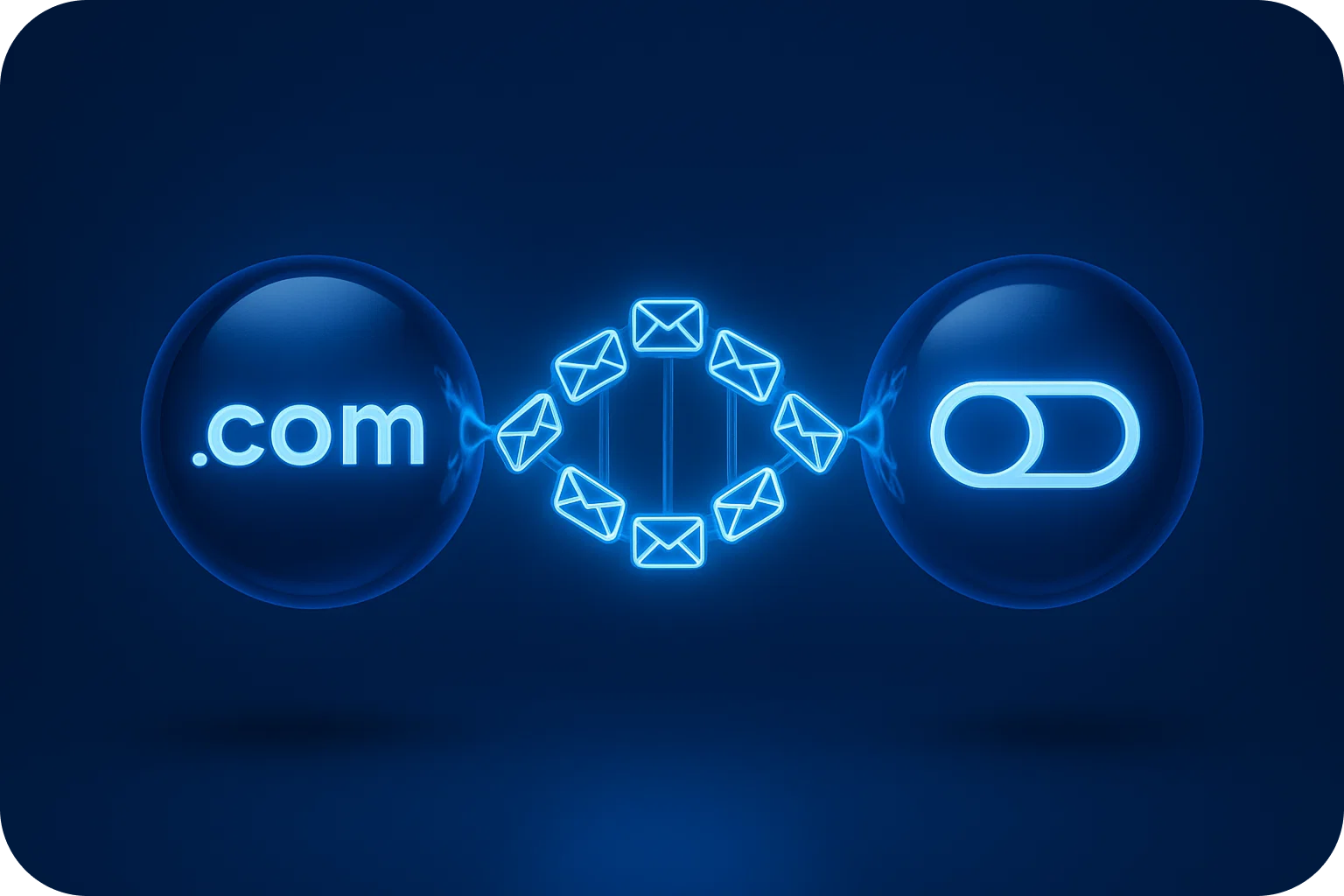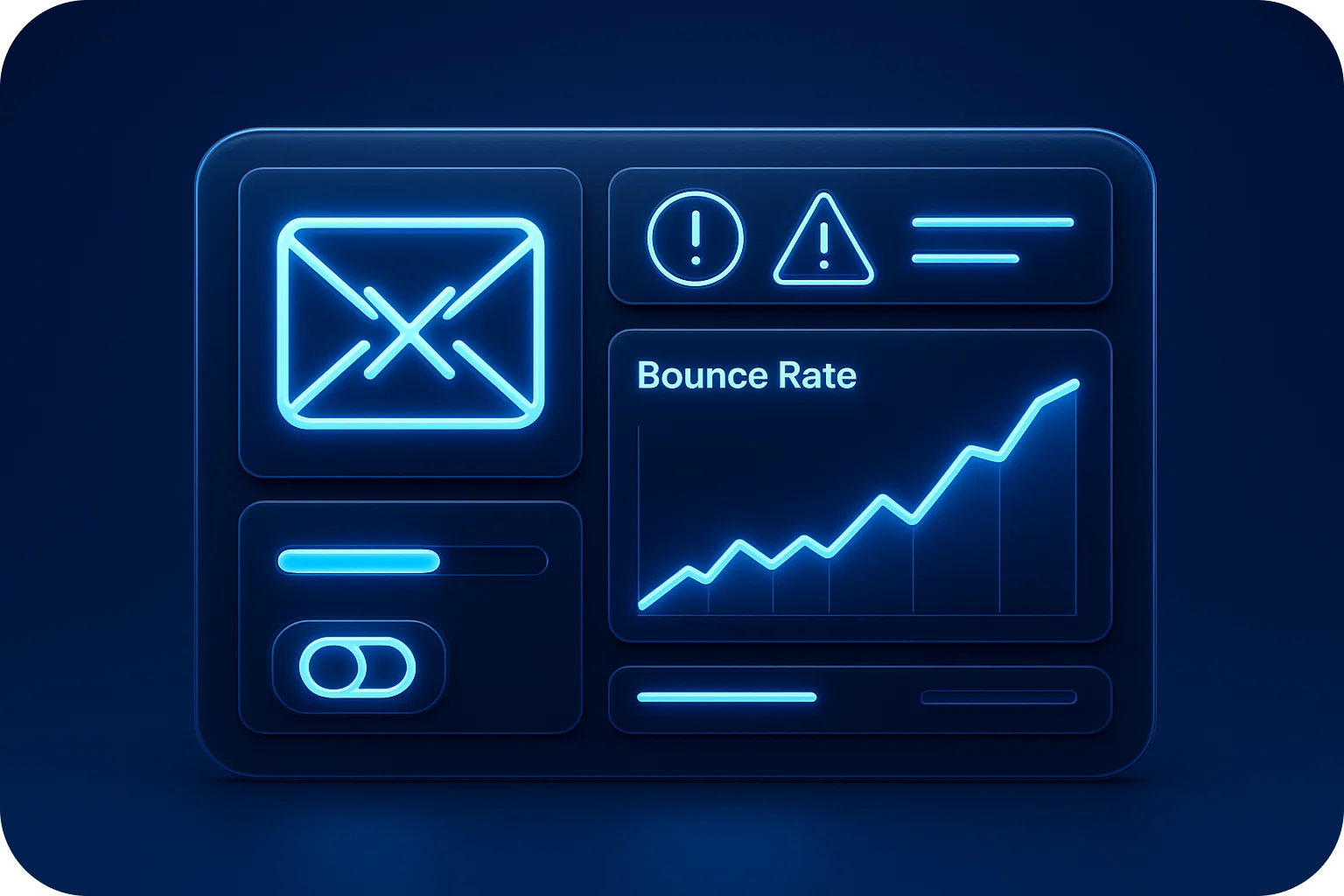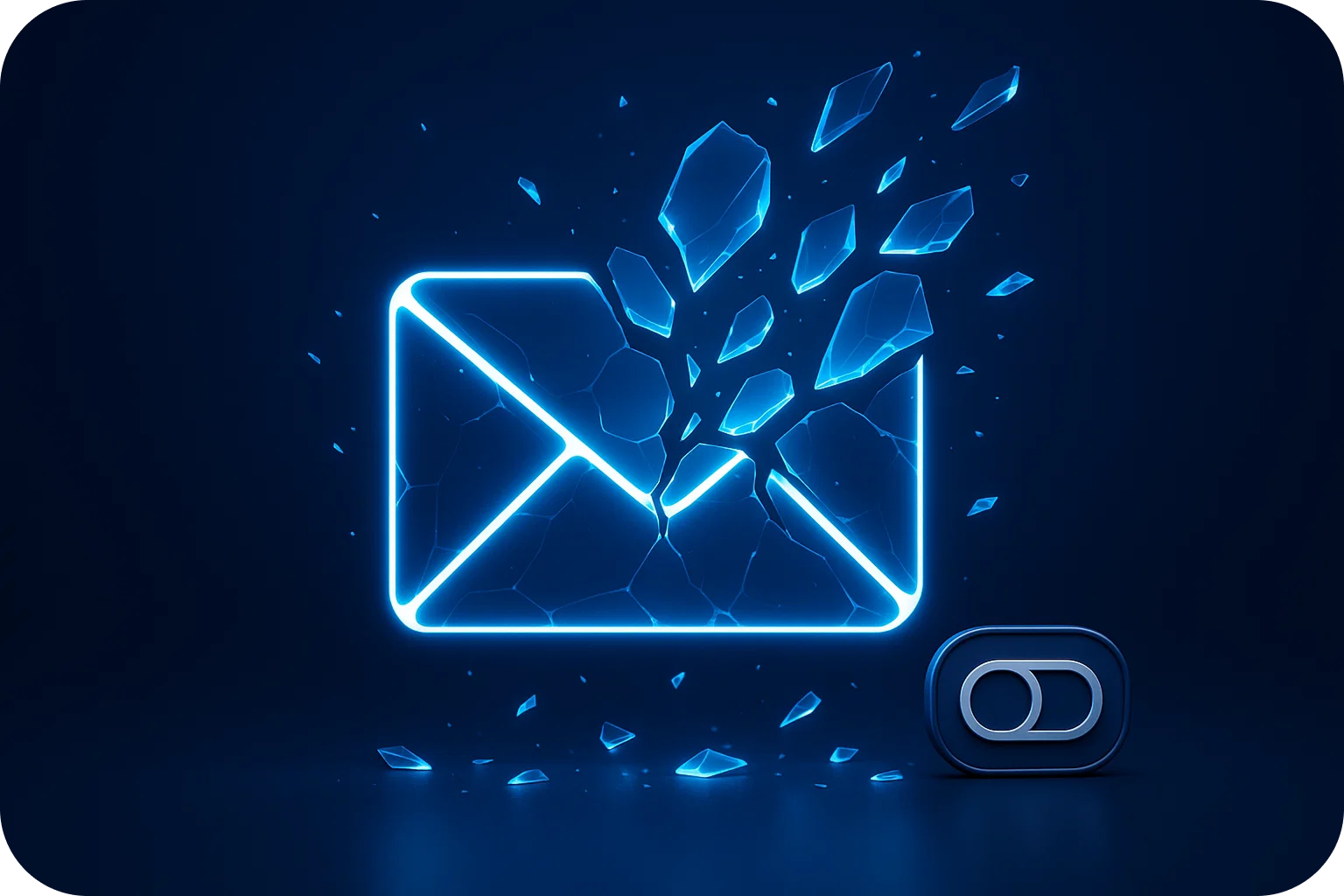Cold Email for SaaS Partnerships: The Outreach Framework That Lands Strategic Deals

Strategic partnerships can transform a SaaS business overnight. The right integration partner, co-marketing alliance, or technology collaboration can unlock new markets, enhance your product offering, and accelerate growth in ways that traditional sales tactics simply can't match.
But here's the challenge: decision-makers at potential partner companies are inundated with partnership requests. Your cold email needs to cut through the noise and immediately demonstrate mutual value. This isn't about selling, it's about building strategic alliances that benefit both parties.
In this guide, we'll break down the partnership-focused cold email outreach framework that helps SaaS companies land strategic deals, integrations, and co-marketing opportunities.
Why Cold Email Works for SaaS Partnership Outreach
Unlike traditional sales outreach, partnership development requires a different approach. You're not pitching a product—you're proposing a strategic relationship. Cold email outreach remains one of the most effective channels for initiating these conversations because:
Direct access to decision-makers. Email allows you to reach partnership managers, business development leaders, and even C-suite executives directly without gatekeepers.
Scalable yet personalized. You can systematically reach multiple potential partners while maintaining the personalization necessary for high-stakes partnership conversations.
Documentation and clarity. Email provides a written record of your value proposition, making it easier for recipients to share internally and build consensus.
Lower barrier to entry. Unlike requesting meetings or phone calls, email allows prospects to engage on their own timeline.
The Partnership Email Framework: 5 Essential Components
1. The Strategic Subject Line
Your subject line determines whether your email gets opened. For partnership outreach, avoid sales-y language and focus on mutual opportunity.
Effective formulas:
- "[Your Company] + [Their Company] integration opportunity"
- "Partnership idea for [Their Company's] [specific user segment]"
- "Exploring collaboration between [Your Company] and [Their Company]"
- "Quick question about [Their Company's] partnership strategy"
Example: "Mailpool + Salesforce integration opportunity for enterprise customers"
The key is specificity. Generic subject lines like "Partnership opportunity" get ignored. Show that you've done your homework.
2. The Credibility-Building Opening
Start by establishing why you're reaching out and why they should care. This isn't about you—it's about them and their business objectives.
Framework:
- Brief introduction (one sentence about your company)
- Specific observation about their business
- Clear statement of mutual opportunity
Example:
"I'm Peter from Mailpool.ai, where we help SaaS companies scale their cold outreach infrastructure. I noticed [Their Company] recently launched an AI SDR agent, and your customers likely need robust email deliverability to maximize their outreach results."
This opening accomplishes three things: establishes credibility, demonstrates research, and hints at value.
3. The Value Proposition (From Their Perspective)
This is where most partnership emails fail. They focus on what they want rather than what the potential partner gains.
Structure your value proposition around:
- Customer benefit: How does this partnership improve their customers' experience?
- Revenue opportunity: What's the financial upside for them?
- Competitive advantage: How does this differentiate them in their market?
- Operational efficiency: Does this solve an internal challenge?
Example:
"A partnership between our platforms could deliver significant value to your customers who are scaling their outbound efforts. By integrating Mailpool's deliverability infrastructure with your AI SDR platform, your customers could achieve 98% inbox placement rates while scaling their outreach 100x—directly improving their ROI from your solution."
Notice the focus: their customers, their value proposition, their competitive position.
4. The Specific Partnership Proposal
Vague partnership ideas get vague responses (or no response at all). Be specific about what you're proposing.
Common SaaS partnership types:
- Technology integration: API integration that enhances both products
- Co-marketing alliance: Joint webinars, content, case studies
- Reseller/referral program: Revenue-sharing arrangement
- White-label solution: Your technology under their brand
- Strategic bundle: Combined offering at special pricing
Example:
"I'm proposing a technical integration where Mailpool handles email infrastructure and deliverability for customers using your AI SDR platform. This could include:
- Native integration in your dashboard - Co-branded onboarding for shared customers - Revenue share on referred customers - Joint case studies showcasing results"
Specificity demonstrates that you've thought through the partnership and understand their business model.
5. The Low-Friction Call-to-Action
Don't ask for too much too soon. Partnership deals take time to develop. Your initial goal is simply to start a conversation.
Effective CTAs for partnership outreach:
- "Would a 15-minute exploratory call make sense?"
- "I'd love to share a brief deck outlining the opportunity—can I send it over?"
- "Are you the right person to discuss partnership opportunities, or should I connect with someone else on your team?"
Example:
"Would you be open to a brief 15-minute call to explore whether this makes sense for [Their Company]? I'm happy to work around your schedule."
Keep the barrier to entry low. You're not asking for commitment—just conversation.
Advanced Sales Tactics for Partnership Outreach
Timing Your Outreach Strategically
Optimal timing windows:
- After they announce funding rounds (expansion mode)
- Following product launches (integration opportunities)
- When they publish partnership-related content (demonstrated interest)
- At the start of fiscal quarters (budget planning periods)
Multi-Threading Your Approach
Don't rely on a single contact. Map out the decision-making structure and reach multiple stakeholders:
- Partnership/BD managers (primary contact)
- Product leaders (integration feasibility)
- Marketing leaders (co-marketing opportunities)
- C-suite executives (strategic vision)
Tailor your message to each stakeholder's priorities.
The Follow-Up Sequence
Most partnership deals require multiple touchpoints. Plan a strategic follow-up sequence:
Email 1: Initial partnership proposal (Day 1)
Email 2: Additional value point or case study (Day 4)
Email 3: Specific integration example or customer story (Day 7)
Email 4: Alternative partnership model or final attempt (Day 14)
Each follow-up should add new value, not simply repeat your ask.
Leveraging Social Proof
Partnership decisions involve risk. Reduce perceived risk by showcasing:
- Existing integration partners (especially recognizable brands)
- Customer testimonials specific to integrations
- Usage statistics that demonstrate scale
- Security certifications and compliance standards
Example: "We currently integrate with Instantly, Lemlist, and Smartlead, serving over 2,000 customers who manage 10+ domains each."
Common Mistakes to Avoid
Mistake #1: Making it about you. Partnership emails that focus on what you need rather than what they gain get ignored.
Mistake #2: Being too vague. "Let's explore partnership opportunities" doesn't give them a reason to respond. Be specific.
Mistake #3: Reaching out too early. Ensure your product is mature enough to support a partnership. Partners want reliability.
Mistake #4: Ignoring their partnership page. Many SaaS companies publish partnership criteria. Review it first and address their requirements.
Mistake #5: Poor email deliverability. If your partnership outreach emails land in spam, you've lost before you started. Ensure proper email infrastructure and warm-up.
Measuring Partnership Outreach Success
Track these metrics to optimize your partnership cold email campaigns:
- Open rate: Target 40%+ (higher than sales outreach due to relevance)
- Response rate: Target 10-15% for well-researched partnership outreach
- Meeting booking rate: Target 5-8% conversion to exploratory calls
- Partnership conversion rate: Track how many conversations become active partnerships
Remember: partnership development has longer sales cycles than typical SaaS sales. A 90-day cycle from initial outreach to signed agreement is common.
Scaling Your Partnership Outreach
Once you've validated your framework, scale systematically:
- Build a target partner list based on complementary products, shared customer profiles, and strategic fit
- Segment by partnership type (integration, co-marketing, reseller) and customize messaging
- Invest in email infrastructure to ensure deliverability at scale—platforms like Mailpool.ai help SaaS companies manage multiple domains and maintain 98% deliverability
- Create partnership collateral including one-pagers, integration mockups, and ROI calculators
- Establish a partnership pipeline in your CRM to track conversations and follow-ups
Conclusion
Cold email outreach for SaaS partnerships is fundamentally different from traditional sales tactics. It requires deeper research, more strategic thinking, and a genuine focus on mutual value creation.
The companies that excel at partnership development don't just send emails; they build relationships. They demonstrate that they understand their potential partner's business, customers, and strategic objectives. They propose specific, actionable partnerships that create clear value for both parties.
By implementing this framework—strategic subject lines, credibility-building openings, partner-focused value propositions, specific proposals, and low-friction CTAs- you'll dramatically increase your partnership outreach success rate.
Strategic partnerships can unlock growth that traditional sales channels can't match. The question isn't whether to pursue them, it's whether you have the outreach framework to land them.
Start with one well-researched partnership email today. The strategic alliance that transforms your SaaS business might be just one email away.
More articles
Get started now




%201.png)





